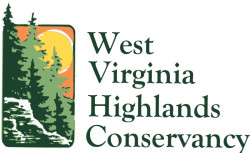By Bonni McKeown, Stewards of the Potomac Highlands
West Virginia Division of Highways chief Jimmy Wriston recently vowed to have two unbuilt, controversial sections of Corridor H under contract by the end of 2024.
The two sections in question—the nine-mile, $467 million stretch from Parsons to Davis in Tucker County, and the $166 million, seven miles from Wardensville to the Virginia line in Hardy County—are the most sensitive in the 100-mile route. Legally, environmental reviews must be done before construction.
There are good reasons to be cautious when proposing huge permanent changes to local communities and Main Street economies, massively altering mountains, streams, forests and farms with blasting, earthmoving, and paving. Yet even with its Corridor H track record of muddied streams and half-built bridges caving in, WVDOH wants to rush through environmental studies and build, build, build.
Businesses, residents, and visitors who value, appreciate, and depend on the natural and historic qualities of West Virginia have a right to full disclosure and honest deliberation based on updated facts of economics and science. The last full environmental impact studies were done in 1994-96.
In Tucker County, a local coalition, backed by national allies, has gone to great lengths to propose a practical “Go North” route that differs from WVDOH’s preferred alternative. “Go North” would avoid a four-lane splitting the towns of Davis and Thomas and avoid major impacts to Blackwater Canyon and historic areas near Thomas. But even with federal agencies’ encouragement, WVDOH so far is not treating the Go North proposal seriously. They are just in a hurry to build, build, build.
In the other section, eastern Hardy County, the terrain is full of sinkholes, caves and springs—including the aquifer in the path of Corridor H that now furnishes water for the Town of Wardensville and many homeowners’ wells. When the politicians leave office, and the highway engineers and construction contractors are all done, they get paid and go home. Those who live, work and recreate here get stuck with their mess. A mess not easy to clean up.
DOH’s Wriston no doubt hopes his urgent words for Corridor H might nicely detract from public focus on his family conflicts of interest. But for the citizens and taxpayers, what’s the rush? Our area has done fine for years without these sections of Corridor H.
Further, Corridor H remains a “Road to Nowhere.” WVDOH has no agreement from Virginia to build its proposed section of Corridor H from the state line to Interstates 81 and 66. Virginia’s Commonwealth Transportation Board retains its plans NOT to build the four-lane. In October 2022, Shenandoah County, Virginia, and the town of Strasburg renewed their opposition by passing resolutions against Corridor H.
Let’s just ignore Mr. Wriston’s build-it blathering, and proceed cautiously and slowly on Corridor H. Environmental studies need to respect the millions of years nature took to build our Potomac Highlands mountains, forests and rivers.
Bonni McKeown, a writer and lifelong transport activist from Hampshire County, is president of the citizens group Stewards of Potomac Highlands, which opposes the Corridor H highway through eastern West Virginia.

